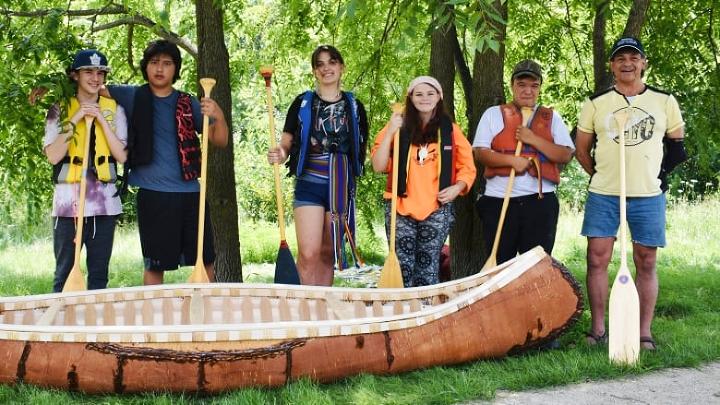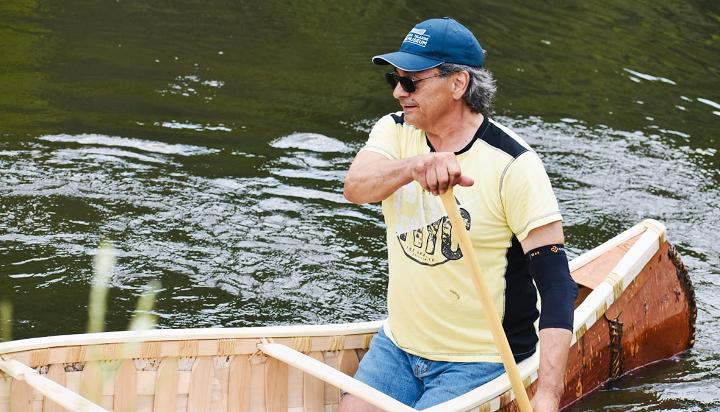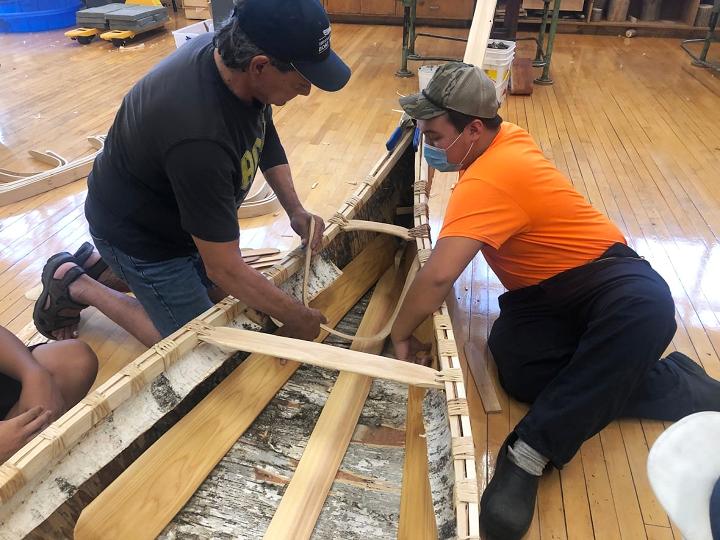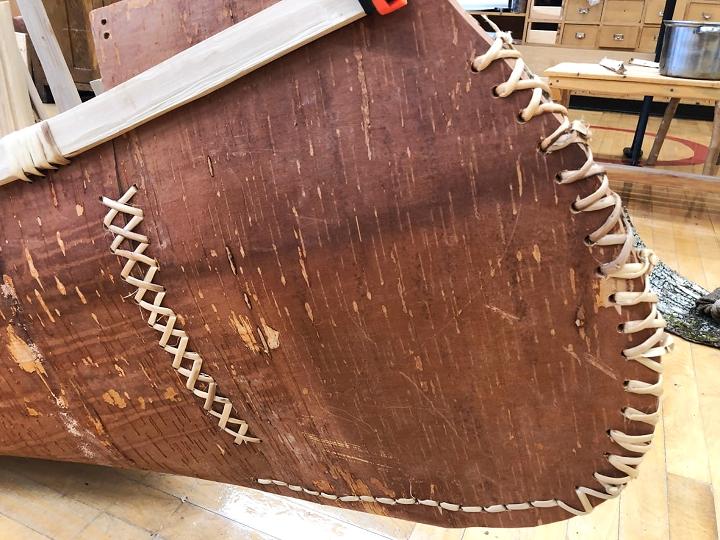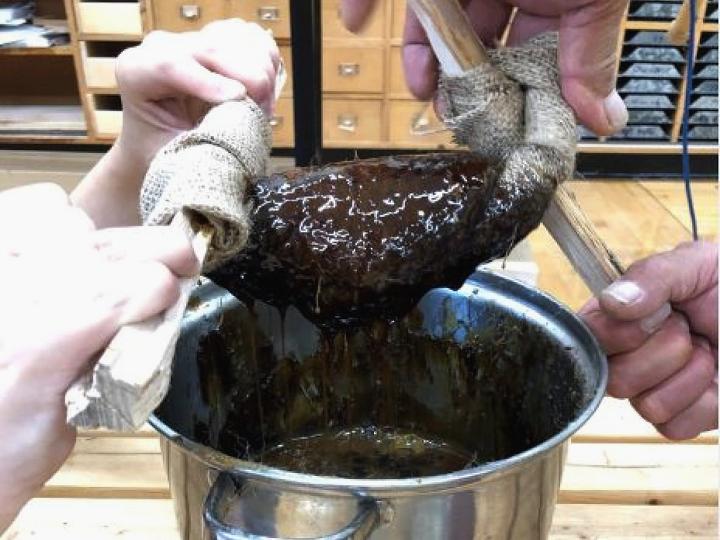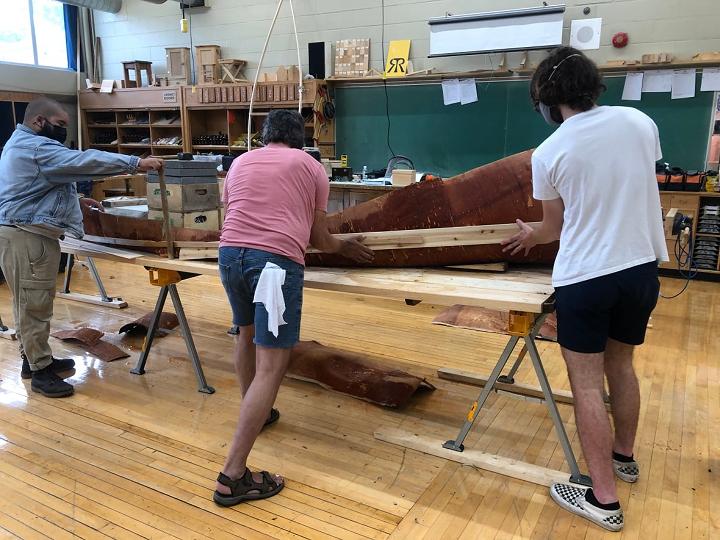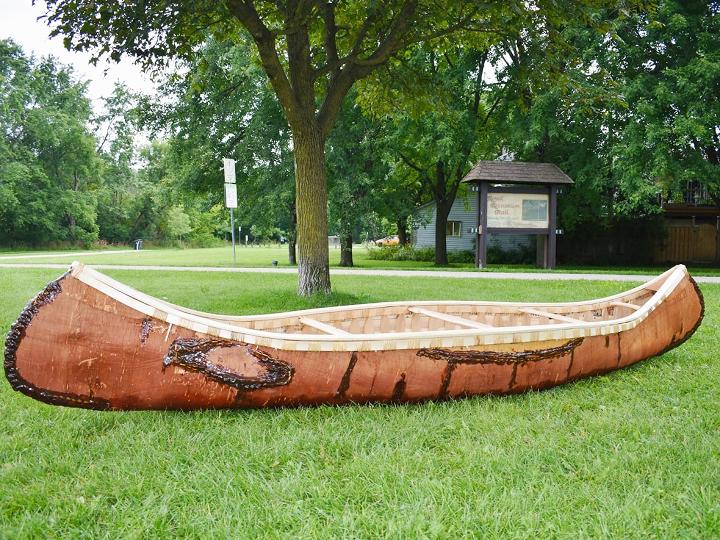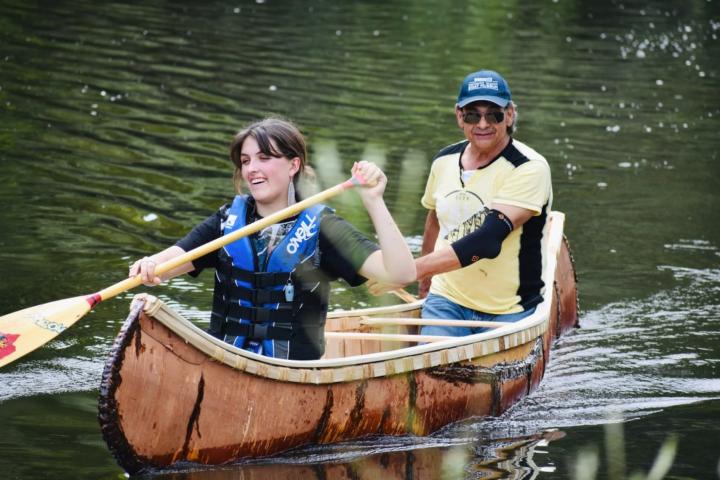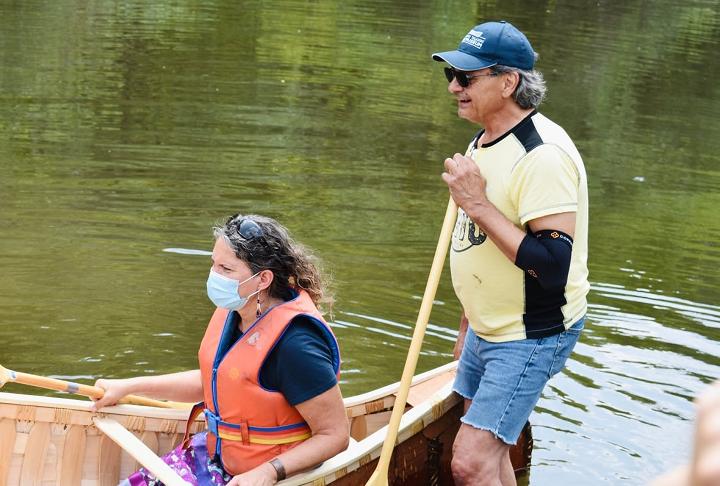 |
Canku Ota
|
 |
|
(Many Paths)
|
||
|
An Online Newsletter
Celebrating Native America
|
||
|
July 2021 - Volume 19
Number 7
|
||
|
|
||
|
Indigenous Students
Paddle Handmade Birch Bark Canoe On Speed River
|
||
|
by Tiffany Mongu ·
CBC News
|
||
|
The experience
was an opportunity for youth to learn more about their heritage
Five Indigenous students from the Upper Grand District School Board (UGDSB) have built a handmade birch bark canoe and paddled it on the Speed River. Mentored by longtime canoe builder Chuck Commanda, it took the students nine days — working seven hours a day — to craft the vessel. They used natural materials including spruce root, birch bark, cedar, ironwood and oak. Commanda is an Algonquin Master Canoe Builder who hails from Kitigan-Zibi, Que. He is one of the few remaining people who continues to build birch canoes, traditional snowshoes and baskets. He's kept the tradition alive for many years by visiting schools and museums to educate and share with community members important Indigenous cultures and traditions.
"The message I got from my ancestors from beyond was to bring it back to the communities," said Commanda. Because his parents attended residential schools, there was a gap in passing along traditional knowledge. Instead, Commanda said he learned these skills from his grandparents. "My grandparents, they continued that tradition from their parents and so on," he said. "I was one of 12 grandchildren that took it seriously, I became their helper. I was about 12 years old when I first started learning." Commanda recalls his grandparents teaching him the value of harvesting, giving back to mother nature and sustainability. Today as he continues to pass down these teachings across Ontario, he finds younger generations are eager to be stewards of the land and protect it. "I figured these kids can champion their local politician or at some point. Maybe we're looking at a future prime minister, or future environmental minister," he said. "These words that we talk about when we're doing a canoe build will resonate with them later on in life."
Students value preserving ancestry For the students, the experience was more than just building a canoe, it was about learning more about their heritage and seeing the importance of preserving it. "It feels so important to me to be able to go back to my original, traditional ways and [learn] these things as an Indigenous person," said Avaline Booth, 15, a high-school student from Centre Wellington District High School. "I feel very honoured to be a part of this because it's traditional to who I am and it's just been like a great community [of] people that I've been able to meet and get to know and now, I'm so close to them," she said.
For Adison Evans, who is going into Grade 10 at John F. Ross, the canoe is symbolic; it was her ancestors' only mode of transportation to travel. "We need to remember that our ancestors could only travel in that way and how important it was to them, so it should still be important to us," she said. "It's not about the canoe, it's about the teachings that came with the canoe and that's why it's so valuable to me." Colinda Clyne, Anishinaabe Kwi also from Kitigan-Zibi, Que., said she was emotional when the first student got in the canoe because as curriculum lead for First Nations, Métis and Inuit education at the school board, it's her role to create these opportunities for students in the community.
"This is their birthright to have access to this knowledge and it doesn't happen in the system. My job is to try and make that happen for them. It filled my heart." More learning opportunities needed Booth said the project made her realize the importance of traditional Indigenous practices, and how vital it is for the school system to educate children about their Indigenous heritage. "The school system right now, I find, is extremely colonized, ... It's not inclusive of other cultures," she said. "I feel it's extremely important to decolonize that system to go back and teach Indigenous children about where they come from and who they are." Natalka Pucan, co-chair of the First Nations, Métis and Inuit Education Association of Ontario told CBC News that all Canadians should learn about the events that occurred in residential schools, since it's a matter of intergenerational grief, loss and trauma that continues to affect people in profound ways. "Our kids are empathetic, and if we teach them the true history of this country, they'll help find a better way," she said. "We owe it to our kids to help them understand what happened in this country." Clyne said the project was an opportunity to give the students access to traditional knowledge. "I don't want the students to just go back to their schools, and this is the only Indigenous opportunity that they have," she said. "I'm hoping that all of their teachers see this and then they start looking at how they might also include Indigenous content in all of their courses that they're taking." |
||||||||||||||||||
|
|
|
|
||
|
|
||
| Canku Ota is a free Newsletter celebrating Native America, its traditions and accomplishments . We do not provide subscriber or visitor names to anyone. Some articles presented in Canku Ota may contain copyright material. We have received appropriate permissions for republishing any articles. Material appearing here is distributed without profit or monetary gain to those who have expressed an interest. This is in accordance with Title 17 U.S.C. Section 107. | ||
|
Canku Ota is a copyright ©
2000 - 2021 of Vicki Williams Barry and Paul Barry.
|
||
 |
 |
|
|
The "Canku
Ota - A Newsletter Celebrating Native America" web site and
its design is the
|
||
|
Copyright ©
1999 - 2021 of Paul C. Barry.
|
||
|
All Rights Reserved.
|
||
